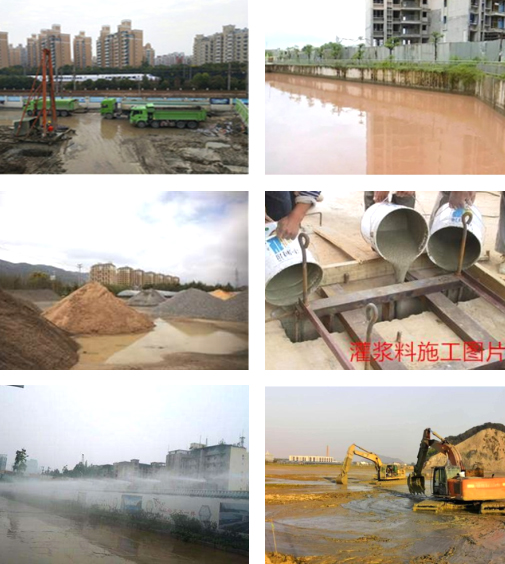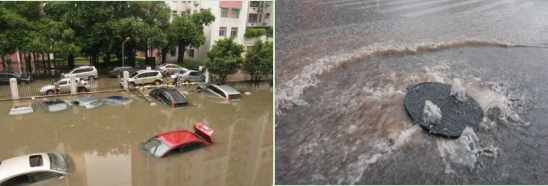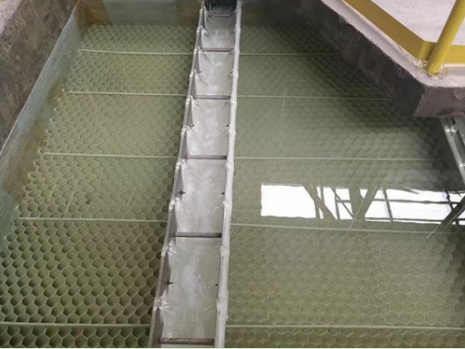Mud water mainly comes from:
1. Excavation slurry water: During the construction process of the construction site, excavation of the foundation pit is carried out to expand the construction surface. During this process, a large amount of mud water will be produced. (Groundwater, rainwater mixed with sediment)
2. Pile driving mud water: During the construction process of engineering projects, the pile driver usually uses mud protection arms to prevent collapse during drilling, but it will produce a large amount of mud water.
3. Mud water in the raw material storage yard: When storing sand and gravel on the construction site, water will be sprayed for maintenance in order to maintain the humidity of the sand and gravel. Due to the impact of rainwater, a large amount of mud and water will be generated during the stacking of raw materials.
4. Grouting slurry water: In some construction techniques, grouting technology is adopted. During the grouting construction process, it is inevitable to produce mud leakage, splashing, etc., and the mud water generated during this process cannot be ignored.
5. Mixing slurry water: During the construction process of the construction site, the concrete mixing process inevitably generates a large amount of slurry water during the mixing of concrete by the transport pump truck, mixing station, and supporting facilities. This type of concrete slurry water has great damage to the pipeline network.
6. Dust reduction slurry water on construction sites: During the construction process of engineering projects, in order to maintain the cleanliness of the city and avoid environmental pollution caused by dust, the construction party generally adopts measures such as mist cannon dust reduction and watering dust reduction, which will produce slurry water.
7. Car wash station mud water: In order to maintain a clean and hygienic urban environment, vehicles on construction sites need to be washed and dusted when entering and leaving the site. A large amount of car wash water mixed with dust forms mud water, especially for earthwork transportation vehicles, which are prone to producing mud water.
8. Mechanical construction mud water, etc.: During mechanical construction, mud water is needed to lubricate, maintain hole walls, prevent seepage, and prevent soil residue from affecting drilling. This process will generate a large amount of mud water.

Hazards of Mud Water:
Hazard 1: Severe pollution of rivers
Polluting river water bodies, construction mud water carrying pollutants such as cement and oil on the construction site entering river channels and water source protection areas, causing water pollution. Mud entering the river increases the sediment content of the river, which can seriously cause sedimentation and elevation of the riverbed. This not only makes the river dirty, foul smelling, and black, but also seriously affects the safety of flood discharge.

Hazard 2: Causing urban waterlogging
The illegal discharge of mud is currently a significant cause of urban waterlogging. The illegal discharge of construction mud into municipal drainage pipelines can easily lead to sedimentation and blockage of the drainage network. Stealing drainage not only causes sedimentation and blockage of the drainage network, but also hinders the smooth drainage, resulting in accumulated water and causing urban waterlogging.
Hazard 3: Destruction of pipeline network facilities
A large amount of construction mud poured into the drainage pipe can easily cause pipeline blockage. Some mud also hardens and hardens, causing the drainage pipe to lose its drainage function, causing a devastating impact on the drainage pipe, completely losing its flood discharge function, and even scrapping. If the drainage function needs to be restored, excavation and construction must be carried out again, resulting in huge economic losses.

At present, most of the treatment methods are entrusted by the construction party to third-party sewage treatment institutions to treat the mud water generated on the construction site, but the treatment cost is high and transportation is troublesome; Some construction companies construct their own three-level sedimentation tanks to treat mud water, and the concentrated sludge is handed over to third-party sludge treatment institutions for treatment. This treatment method has relatively low treatment costs but occupies a large area, low efficiency, and long construction period. Some construction parties or third-party treatment institutions use sludge transport vehicles to engage in illegal and irregular operations, and illegally discharge mud water into the municipal sewage pipeline network. Once caught, they will face severe punishment and even criminal punishment.
In response to the current situation of mud water treatment, our company's "surge type high-efficiency coagulation+high-density inclined pipe sedimentation+reclaimed water reuse" technology can be specifically applied to the reduction of mud water in construction project sites.
Technical features: Surge stirring can save chemicals, and repeated stirring can make the mixing of chemicals more uniform. The later part is stirred to form a reaction. Simultaneously accelerate the combination of coagulants, coagulants, and SS, accelerate the coagulation and sedimentation reaction speed, and save reaction time.
By utilizing the principle of laminar flow, the processing capacity of the sedimentation tank has been improved;
Shortened the settling distance of particles, thereby shortening the settling time;
The sedimentation area of the sedimentation tank has been increased, thereby improving the treatment efficiency.
The flow rate of the inclined tube sedimentation tank can reach 5m³/ (㎡·h), with a processing capacity 3-5 times higher than that of ordinary sedimentation tanks, is a new type of high-efficiency sedimentation equipment. And it has been finalized for production practice.
Advantages: High removal efficiency, short residence time, and small footprint.

Cloud Platform Remote Monitoring and Control Technology: The cloud platform remote monitoring and control technology realizes the remote monitoring and control function. The system and PLC logic control cabinet, 4G network transmission gateway, fault sensors, status sensors, and mobile APP are integrated to achieve unmanned and automatic operation. If there is a fault, automatic alarm can be triggered and on-site troubleshooting can be carried out through remote control. A dedicated person can be configured to be on duty for 7 * 24 hours online, so as to ensure the normal operation of the equipment to the maximum extent possible in the absence of on-site management.
The system has a high degree of automation and adopts PLC control, which can achieve full process automation control.
Equipment appearance:

Reuse advantages:
1. Reusing reclaimed water for construction sites can effectively save and utilize freshwater resources, reduce wastewater discharge, and alleviate water environment pollution.
2. Reclaimed water can be used for dust removal and reduction measures, reducing the generation of dust and creating a good appearance of the construction site, which is conducive to the cleanliness of the city.
3. The treated sewage can serve as a miscellaneous water source, reducing the water load of water supply and drainage, and reducing the economic expenses of construction sites.
4. It can alleviate the overload phenomenon of urban drainage pipelines, facilitate the maintenance and effective function of pipeline networks, reduce the probability of urban waterlogging, and have significant social, environmental, and economic benefits.

Post time: Mar-19-2024

